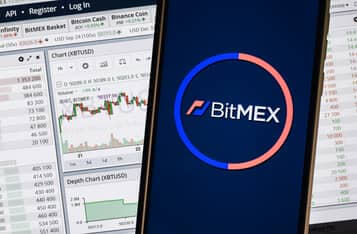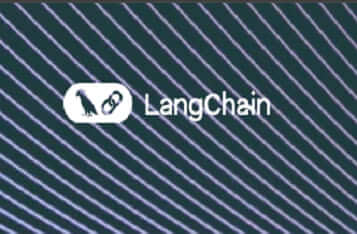Understanding Liquidity in the Web3 Ecosystem
Liquidity is a concept that frequently arises in the financial world and holds significant importance in the Web3 space, particularly with the rise of decentralized finance (DeFi). In essence, liquidity refers to the ease with which an asset, such as a cryptocurrency, can be bought or sold without causing a substantial change in its price.
Imagine a market where you are selling apples. If there are numerous buyers willing to purchase your apples at the current price, your apples are considered “liquid.” You can sell them quickly without reducing the price. Conversely, if buyers are scarce, you may need to lower the price or wait longer to make a sale, indicating lower liquidity.
In the context of Web3, liquidity pertains to digital assets like cryptocurrencies and tokens. High liquidity implies that tokens can be traded swiftly, whereas low liquidity indicates that finding a trading partner may take longer or result in a less favorable deal.
Why is Liquidity Important in Web3?
Liquidity is crucial for the smooth operation of decentralized markets and applications. Here’s why liquidity is essential in the Web3 world:
Efficient Trading: High liquidity allows for seamless trading of tokens without slippage, the difference between the expected and actual trade prices. Low liquidity can lead to significant price swings, creating an unpredictable market.
Fair Prices: In liquid markets, prices tend to be stable and reflective of real value. Low liquidity can cause small trades to result in substantial price movements, complicating price predictions for tokens.
User Experience: Web3 applications like decentralized exchanges (DEXs) rely on liquidity to provide fast and reliable services. Low liquidity can lead to delays or unfavorable prices, discouraging participation in the exchange.
How Does Liquidity Work in Web3?
In Web3, liquidity typically comes from two main sources:
- Liquidity Providers (LPs): Regular users who deposit their crypto into a liquidity pool. These users, known as liquidity providers, contribute their tokens to the pool, facilitating trading and earning rewards like a share of the trading fees.
- Liquidity Pools: Smart contracts that hold funds to enable trading between different cryptocurrencies on a decentralized exchange. These pools allow for trades without needing a direct buyer or seller, with more funds in the pool resulting in easier and quicker trades.
Liquidity pools can be likened to communal pots of money that people use to trade tokens. The larger the pool, the easier and more substantial the trades.
Examples of Liquidity in Web3
Uniswap and Liquidity Pools: Uniswap, a popular DeFi platform, allows users to swap tokens using liquidity pools. Users deposit pairs of tokens into the pool and receive a share of the fees generated from trades.
Stablecoins as Liquid Assets: Stablecoins like USDC or DAI are highly liquid due to their widespread use and stable prices, making them ideal for providing liquidity in DeFi applications.
NFT Liquidity: Liquidity also applies to NFTs (non-fungible tokens). Some platforms are exploring ways to increase NFT liquidity by allowing users to fractionalize them, making them easier to trade.
Liquidity Mining and Yield Farming
In the Web3 world, liquidity mining or yield farming incentivizes users to provide liquidity to decentralized platforms. Liquidity providers earn rewards, usually in the form of extra tokens, for depositing their assets into a liquidity pool. For example, depositing crypto into a Uniswap pool may earn you Uniswap’s governance token ($UNI) as a reward.
Why Liquidity Matters for Web3 Projects
For Web3 projects to thrive, liquidity is essential. Without it, users would struggle to trade tokens or interact with decentralized applications (dApps). Key reasons why liquidity is critical include:
Smooth Functioning of DEXs: DEXs rely on liquidity pools. Insufficient liquidity disrupts token swaps, affecting the entire system.
Trust and Adoption: High liquidity signals trust in a project, attracting more users. Low liquidity can deter users due to concerns about platform stability and usability.
Price Stability: More liquidity means stable token prices, creating a healthier market and attracting both casual and serious investors.
Common Liquidity Terms in Web3
- Liquidity Provider (LP): A user who contributes tokens to a liquidity pool to facilitate trading on a decentralized exchange.
- Liquidity Pool: A smart contract that holds tokens to enable decentralized trading between cryptocurrencies.
- Slippage: The difference between the expected and actual trade prices, often occurring in low-liquidity environments.
- Liquidity Mining/Yield Farming: Earning rewards for providing liquidity to a platform or decentralized exchange.
- Impermanent Loss: A potential risk for liquidity providers, occurring when the price of deposited tokens changes compared to their initial value.
The Lifeblood of Web3
Liquidity is essential for the efficient operation of decentralized platforms. It enables quick and cost-effective token swaps, stabilizes prices, and offers rewards through liquidity mining. Understanding liquidity can help newcomers make informed decisions when participating in DeFi platforms, trading tokens, or providing liquidity for passive rewards.
For more detailed insights, visit the full article on Gala News.





